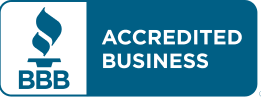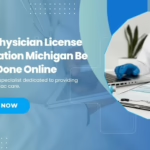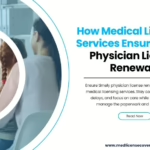Healthcare facility credentialing is a needed procedure that makes certain medical professionals satisfy the required standards to supply care. Each U.S. state has unique policies that guide just how health centers give opportunities to doctors, registered nurses, and various other doctors. Understanding hospital credentialing by state demands aids healthcare specialists avoid hold-ups and maintain lawful compliance.
This overview offers a clear review of what credentialing means, just how it differs by state, and the role of medical licensing and compliance services. The process is not only about credentials but also about patient safety, quality treatment, and functional effectiveness.
What Is Hospital Credentialing?
Hospital credentialing is the approach by which healthcare companies validate a physician’s education, training, work history, and licenses. Healthcare facilities examine this information to verify that the provider meets all requirements to practice safely.
Credentialing relates to physicians, doctor assistants, nurse practitioners, and others that use direct care. Hospitals perform both initial credentialing and re-credentialing to keep up-to-date records. Each state mandates its own documentation and timelines, so comprehending hospital credentialing by state is essential.
Key Elements of Credentialing
Credentialing covers several core elements:
- Verification of education: Medical institutions and postgraduate training should be validated.
- Work history: Any gaps in work need to be clarified.
- Licenses and certifications: State clinical licenses should be current.
- Malpractice insurance: Coverage has to meet state and hospital guidelines.
- Peer recommendations: Past managers or colleagues provide feedback.
- Background checks: Criminal history and sanctions are evaluated.
These parts help hospitals ensure only qualified providers treat individuals.
How Credentialing Differs by State
Hospital credentialing by state reflects how each jurisdiction manages healthcare. Some states have more stringent timelines or documentation guidelines. For example:
- California requires submission of specific continuing education credits for re-credentialing.
- Texas mandates that credentialing be completed within 90 days of a new hire.
- New York includes verification with both the hospital and a central system.
States also use different systems like CAQH or state-run databases. Knowing these differences helps professionals avoid errors or delays.
Why State Compliance Matters
Failing to adhere to credentialing standards can prevent a provider from legally practicing. It can also delay their ability to see patients, which impacts hospital operations and patient access. Proper credentialing also prevents legal issues related to medical errors, billing, or insurance claims.
Medical licensing and compliance services ensure that a provider meets all requirements in their practicing state. These services track updates in state laws, changes in licensure policies, and help healthcare professionals maintain documents ready.
Medical Licensing and Compliance Services
Many professionals rely on medical licensing and compliance services to handle paperwork, communication with medical boards, and license renewals. These services reduce human error, keep deadlines in check, and update providers on changes.
Medical licensing services are especially helpful for providers operating in multiple states. They maintain records like diplomas, residency completion letters, and DEA registrations in secure digital formats.
Compliance services offer alerts on renewal deadlines, track disciplinary actions, and assist with audit readiness. Having a dedicated service for these tasks ensures smooth hospital credentialing by state.
Credentialing vs. Privileging
While often used together, credentialing and privileging are different. Credentialing checks if a provider is qualified. Privileging determines what specific procedures or treatments they can perform.
For example, a surgeon may be credentialed based on their education and license but will be privileged to perform only certain types of surgery. Both steps are required for full hospital access.
Tips for Smooth Credentialing
- Stay organized: Keep digital records of all education and licenses.
- Be proactive: Start the credentialing process early.
- Use services: Partner with medical licensing and compliance services.
- Know the state laws: Understand variations in credentialing rules.
- Update regularly: Re-credentialing may be required every two years.
Benefits of Proper Credentialing
Credentialing protects patients by ensuring only qualified providers are hired. It also helps hospitals avoid legal risk and operational delays. Professionals benefit through faster onboarding, better job mobility, and smoother transitions.
Credentialing helps insurers validate provider credentials. This is essential for reimbursement and reduces fraud. Patients are more likely to trust a system that holds its providers accountable.
Emerging Trends in Credentialing
States are moving toward digital credentialing systems that connect to national databases. Artificial intelligence is also being used to speed up document verification.
Some hospitals are creating centralized credentialing offices to manage multiple locations or facilities. This centralization improves consistency and saves time.
Compliance software platforms are now integrated with credentialing systems. These platforms offer dashboards that help hospital HR teams track renewals, pending documents, and expiration dates.
Conclusion
Understanding hospital credentialing by state is vital for healthcare providers and hospital administrators. While state rules vary, the core purpose remains the same: ensure safe, compliant, and qualified patient care.
By using reliable medical licensing and compliance services, professionals can meet state-specific requirements with confidence. This not only supports patient safety but also builds a strong foundation for long-term success in healthcare.
Hospitals, in turn, benefit from efficient credentialing processes that reduce errors and allow smooth staffing. As credentialing becomes more digital and regulated, staying informed will be key to ongoing compliance and quality care.








